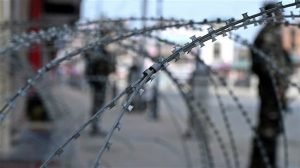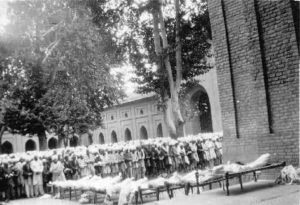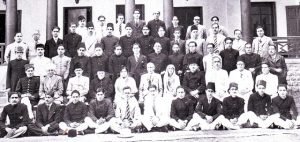
HISTORY OF KASHMIR CONFLICT
In the final resting place of King Yusuf Shah Chak – the last indigenous sovereign ruler of Kashmir, who was betrayed, imprisoned and sent to live out his last despondent days in exile, do we find a compelling metaphor for Kashmir. In uncanny ways, this awful saga continues to disturb the people of Kashmir. The depth of passion it arouses, the spiritual anguish it nurtures, and seething rage it enflames are surreal. And, in this miserable tale, the heartbreak of millions of Kashmiris is vividly relived. Without doubt, this is Kashmir’s story – coveted, yet loathed; adored, but tormented; beautiful, but ravaged. For Kashmiris, history is not yesterday, since it never ends. It exists now.
In 1586, King Yusuf Shah Chak, accepted a peace invitation from the desirous Moghul Emperor Akbar. On two previous attempts, the mighty Mughal ruler had attempted to conquer Kashmir, but was soundly defeated. His army was routed in hand to hand combat by valiant Kashmiri warriors. After careful consideration, Emperor Akbar reasonably concluded that continued direct warfare was not feasible. The Kashmiri warriors had proven too much for their army. Henceforth, rather than engage in further hostilities against an undoubtedly determined, superior fighting force, Emperor Akbar used guile. He invited King Yusuf Shah Chak to Delhi for deliberations and, upon arrival, had him arrested, imprisoned, and coerced to live out his final days far away from his beloved homeland. Since that day, this despairing tale of dispossession and treachery has been woven into the very tapestry of Kashmiri society, retold in every Kashmiri household ever since.
 DOGRA TYRANNY – 1846 TREATY OF AMRITSAR
DOGRA TYRANNY – 1846 TREATY OF AMRITSAR
The unqualified struggle for ‘freedom’ in Kashmir was cemented ever since the British bartered Kashmir with the infamous 1846 ‘Treaty of Amritsar.’ Neither the Mughals nor the Afghans, committed the kinds of horrendous brutality and grotesque atrocities as did the foreign Dogras. All of Kashmir, including its inhabitants, were sold to the Dogra family for a measly 150,000 US dollars. This atrocious document was signed by Maharaja Gulab Singh, for services rendered to the Queen, who was neither Kashmiri nor a resident of the disputed territory. Those without authority or legitimacy – the British, sold a land, people and livestock to another without authority or legitimacy.
As a result of the 1846 ‘Treaty of Amritsar,’ the Princely State of Jammu and Kashmir emerged. And, the false Maharaja expressed his subordination to the British Raj by annual tribute and payment, in exchange for British protection. The criminality and abuse of the Dogra regime knew no bounds. They disenfranchised the Muslim majority, barring them from official positions in administration, military, police and education. It was at this time, too, that the Dogra regime attempted to divide Kashmiri society based on sectarian and other ethnic, cultural basis. In fact, it was not until the onset of the vicious Dogra hegemony that the current cycle of violence manifests.
 1931 MARTYRS DAY
1931 MARTYRS DAY
The Dogra rulers violently suppressed the Kashmiri people in such inhuman ways that their rulership, was forever etched in the minds of the people as grotesque. It was at that time of repression, that the movement for socio-economic and political rights emerged. This, too, at a time when mass arrests were taking place and protests were becoming more commonplace. Then, an event would occur that transformed Kashmir’s political consciousness in a way as never before.
As Zia and Bhat (2019) write “One of the most iconic grass-roots agitations against Dogra rule occurred in 1931. At that time the Kashmiris rose against unjust laws, which were used to crack down on the population. The prosecution of one of the leaders named Abdul Qadeer led to mass demonstrations. On 13 July 1931, the maharaja’s police went on a rampage and ended up killing twenty-two Kashmiris in a dramatic manner. As the time for obligatory prayers approached, one Kashmiri protester rose to give the azan (call to prayer). When he stood up, the Dogra governor Raizada Triloki Chand ordered police to fire upon him. As the wounded man fell in a heap, another Kashmiri stood up to complete the azan and was shot down as well. This went on till twenty-two men were executed in public trying to finish the call to prayer as part of their protest.”
 1931 MUSLIM CONFERENCE
1931 MUSLIM CONFERENCE
As a consequence of the oppression, Kashmiri civil society launched the Muslim Conference which was led primarily by two individuals, GHULAM ABBAS and SHEIKH ABDULLAH. This organization campaigned for the end of Dogra rule and supported the Muslim League movement led by Muhammad Ali Jinnah. However, the personalities, vision and intellectual trajectories of both men clashed, especially on the future of the Princely State of Jammu and Kashmir.
 1947 PARTITION OF THE BRITISH RAJ
1947 PARTITION OF THE BRITISH RAJ
In August, 1947, the British withdrew their sovereignty over their lands in South Asia thereby creating two sovereign countries: India and Pakistan. On the 27th Night of Ramadan, known as Laylatul-Qadr or the Night of Power, the nation-state of Pakistan joined the comity of nations. It was unique in that it was the first country to be made in the name and spirit of its religious persuasion, not ethnic identity. It was meant to be fashioned into a ‘model Islamic welfare state’ where Muslims would be free to form their own institutions, social structures and civilization.
1947 JAMMU MASSACRE
In November 1947, between 200,000 to 300,000 Kashmiri Muslims were murdered in what has been referred to as the Jammu massacre. A vicious state-sponsored pogrom intended for demographic change and to rid the Jammu locality of its Muslim majority status. Over half a million Kashmiris migrated to Pakistan – especially the cities of Sialkot, Wazirabad, Rawalpindi, Lahore and Gujranwala.



